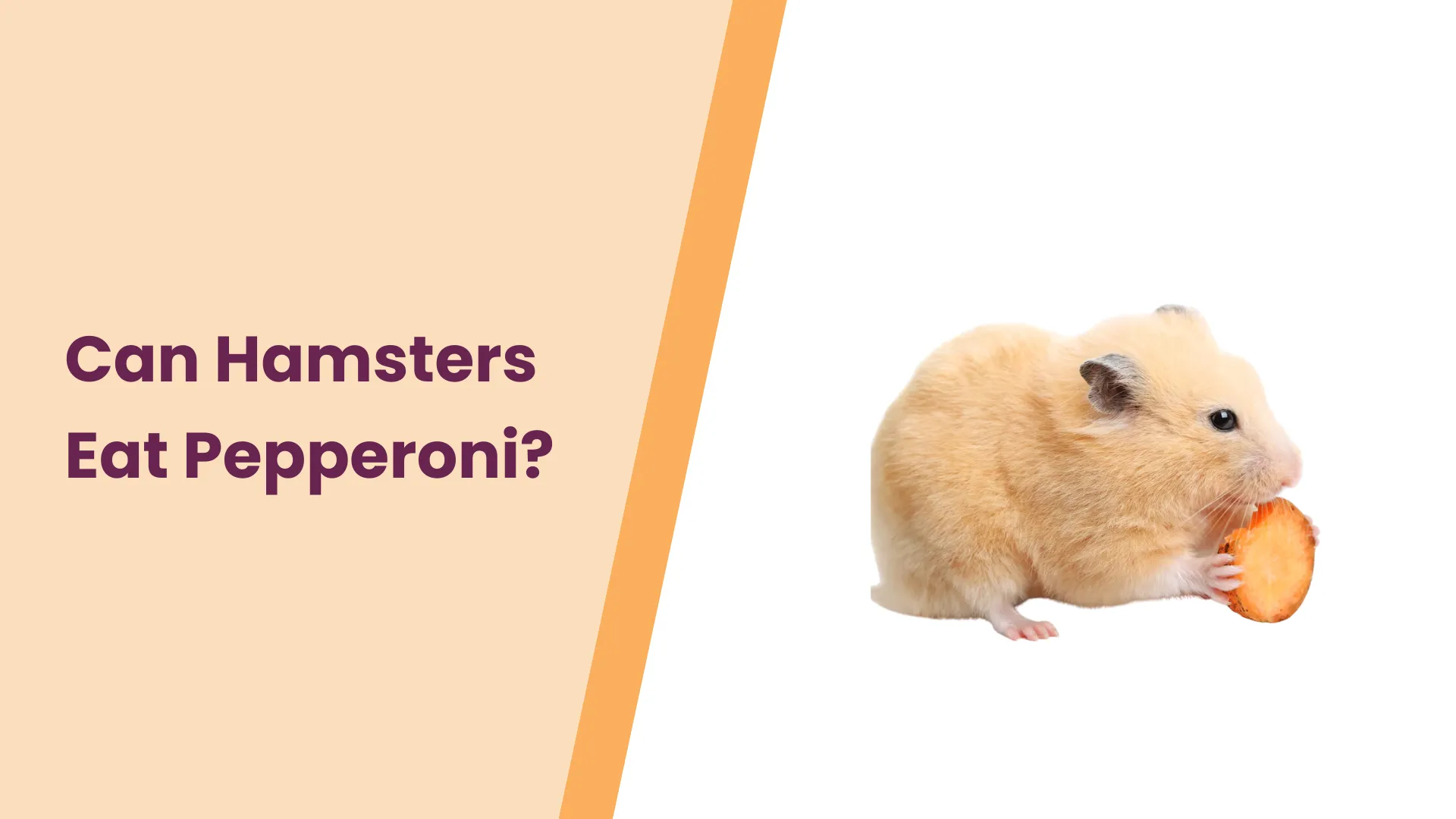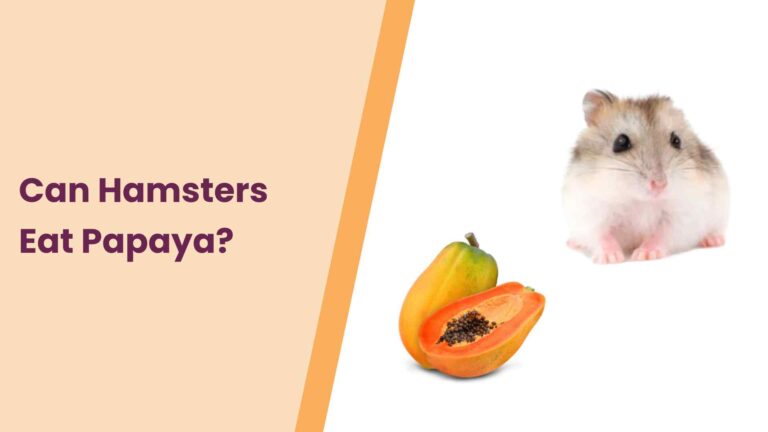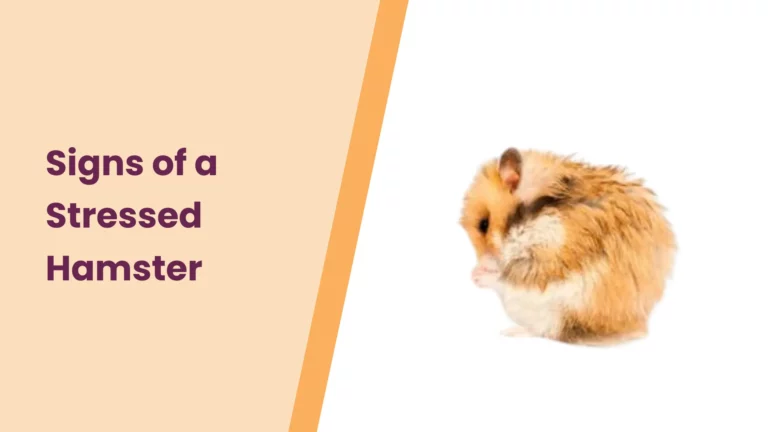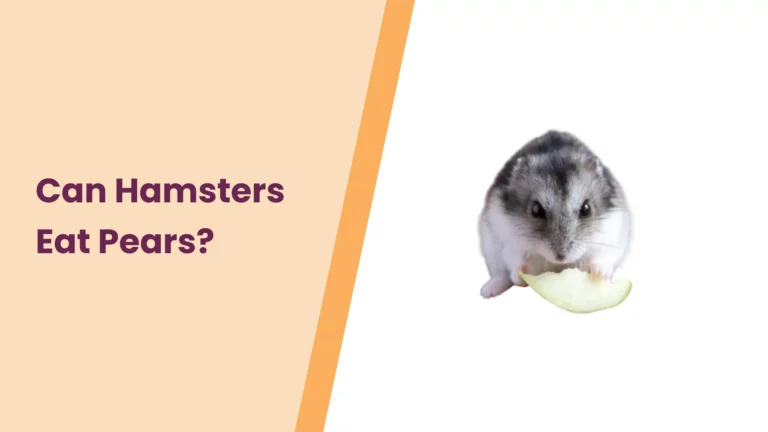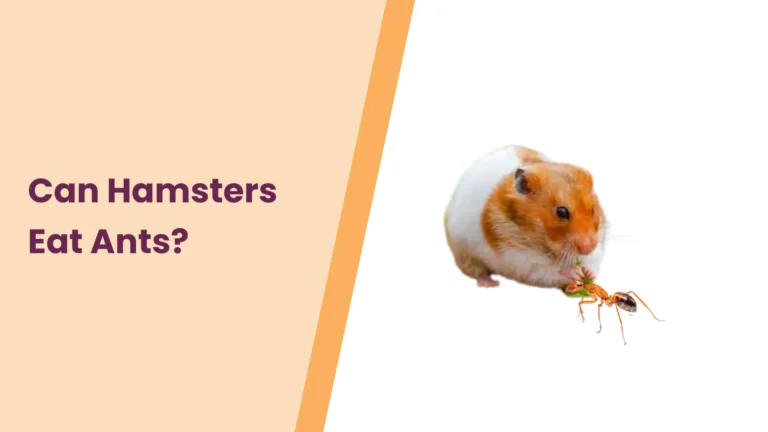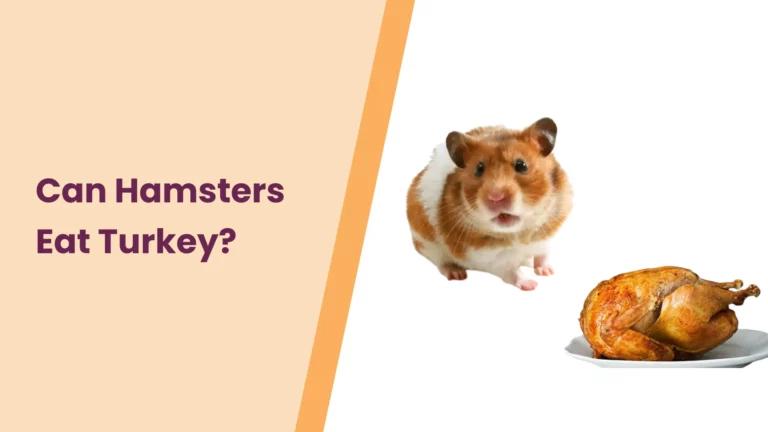Can Hamsters Eat Pepperoni? – An Ultimate Guide
As devoted pet owners, we all want the best for our furry friends, and that includes providing them with a well-balanced diet. But what about those irresistible, savory snacks that we humans enjoy, like pepperoni? It’s not uncommon to wonder if your curious little hamster can nibble on a slice or two.
\However, before you toss a piece into your hamster’s cage, it’s essential to understand their dietary needs and the potential risks of indulging their taste buds. In this comprehensive guide, we delve into the question, “Can Hamsters Eat Pepperoni?“
We’ll explore the nutritional needs of these tiny furballs, take a closer look at the ingredients in pepperoni, and discuss the risks and benefits of including this popular treat in their diet.
So, grab a cup of tea, and let’s embark on a flavorful journey through the world of hamster nutrition.
Understanding Hamster Dietary Needs
As responsible hamster parents, it’s crucial to grasp the fundamental dietary requirements of these tiny, adorable creatures. Hamsters, like all pets, rely on a balanced diet to thrive. Let’s break down the key elements that make up a hamster’s nutritional needs:
1. Protein
Hamsters need a steady supply of high-quality protein to maintain their health and energy levels. Protein aids in muscle development and overall growth. In the wild, hamsters munch on insects, seeds, and small plants, all of which are sources of protein. In captivity, this can be replicated with specially formulated hamster pellets or by providing them with lean, unseasoned meats, like plain cooked chicken or small amounts of cooked egg.
2. Fiber
Fiber is essential for hamsters to maintain a healthy digestive system. They often get their fiber intake from the hay that’s a staple in their diet. It helps prevent constipation and ensures that their intestinal tract remains in excellent working order. While pepperoni is utterly lacking in fiber, hay should always be a part of their daily intake.
3. Vitamins and Minerals
Hamsters require a range of vitamins and minerals for various bodily functions. These are typically obtained from a diverse diet, including fresh fruits and vegetables. Vitamins like Vitamin C and minerals such as calcium are vital for bone health and overall well-being.
It’s clear that hamsters, like all living beings, benefit from a diet rich in variety, ensuring they receive a broad spectrum of nutrients. While the occasional indulgence is acceptable, we should always prioritize their primary dietary needs over treats and snacks. Now, let’s delve deeper into the world of pepperoni to see if it aligns with these dietary requirements.
Pepperoni – A Closer Look
Before we decide whether or not pepperoni is suitable for your hamster’s palate, let’s examine this delectable treat from a closer perspective.

1. What is Pepperoni?
Pepperoni is a popular cured meat product, often found adorning pizzas and making its way into sandwiches and snacks. It’s typically made from a blend of beef and pork, seasoned with various spices like paprika, red pepper flakes, and garlic. The enticing aroma and rich flavor of pepperoni are beloved by many, but is it a safe choice for your hamster?
2. Ingredients and Nutritional Composition
Pepperoni’s nutritional profile is what raises a few red flags when considering it for hamsters. This savory meat treat is notorious for its high fat content, primarily due to the use of fatty cuts of meat in its preparation. Additionally, it often contains a significant amount of salt to enhance flavor. The spiciness of pepperoni is attributed to the various seasonings, particularly red pepper flakes, which may not sit well with your hamster’s sensitive palate.
3. High Fat and Salt Content
Hamsters have distinct dietary requirements that lean towards a low-fat, low-salt diet. Excessive fat and salt can lead to health issues like obesity, heart problems, and kidney troubles in these tiny pets. Given pepperoni’s notably high fat and salt content, it’s essential to exercise caution when considering it as a hamster treat.
While the rich, savory taste of pepperoni may be a treat for us, it’s essential to remember that hamsters have unique nutritional needs. Now that we’ve explored the makeup of pepperoni, we can better understand the potential risks associated with offering it to your furry friend. In the next section, we’ll delve into these risks in detail.
Potential Risks of Feeding Pepperoni to Hamsters
As much as we love indulging in pepperoni as a delicious snack, it’s crucial to consider the potential risks when offering it to our hamster companions. All in all, it’s best to keep pepperoni away from your hamster. Let’s explore the specific concerns associated with sharing pepperoni with your furry friend.
1. High Fat Content
One of the primary concerns with pepperoni is its sky-high fat content. Hamsters are naturally predisposed to obesity when they consume excess fats. Feeding them fatty treats like pepperoni can lead to weight gain, which in turn can cause a host of health issues, including diabetes, heart problems, and decreased mobility.
2. Excessive Salt Intake
Salt is another culprit in the list of potential risks. Hamsters require a diet low in salt, as their tiny bodies are highly sensitive to sodium. An excess of salt can lead to dehydration, kidney problems, and other salt-related health complications. Pepperoni’s salt content can be dangerously high for these tiny creatures.
3. Spices and Seasonings
While we might appreciate the zesty kick of spices and seasonings in pepperoni, our hamsters have much more delicate taste buds. The spicy seasonings, such as red pepper flakes and garlic, can be overwhelming for them. In some cases, these seasonings may cause digestive discomfort and digestive upset.
4. Digestive Issues
The rich and fatty nature of pepperoni can lead to digestive troubles in hamsters. These little pets have sensitive stomachs, and a sudden, rich food intake can result in diarrhea or constipation. Both conditions can be distressing for hamsters and require prompt attention.
Moderation is Key
Just like us, hamsters enjoy a treat now and then. These delightful nibbles can bring joy to their days and foster a bond between you and your furry friend. However, the golden rule when it comes to treats for your hamster is simple: moderation is key.
Understanding Treats: Treats, whether store-bought or homemade, can be a delightful addition to your hamster’s diet. These goodies often come in the form of seeds, fruits, or small bits of vegetables. While treats can make your hamster’s day, it’s important to remember that their small bodies have specific nutritional requirements. Excessive treats can easily tip the balance and lead to health issues.
Portion Control: Think of treats as the icing on the cake of your hamster’s diet. To maintain a healthy diet, the majority of their nutrition should come from their regular food, such as commercial hamster pellets and fresh vegetables. When offering treats, ensure they are tiny, bite-sized portions. Overindulging in treats can lead to weight gain and dietary imbalances.
Variety is the Spice of Life: Variety in treats is not just enjoyable for your hamster; it can also provide a broader spectrum of nutrients. Consider offering a rotation of safe treats to keep things interesting. Just like us, hamsters appreciate a little diversity in their diet.
Observation Matters: Every hamster is unique, and their reactions to treats can vary. Some may have a preference for certain treats, while others may have sensitivities. It’s essential to observe your hamster’s reactions to different treats and adjust accordingly. If you notice any adverse effects like diarrhea or a loss of appetite, it’s time to reconsider the treat in question.
Healthy Hamster Treat Alternatives
We all know the sparkle in our hamster’s eyes when they’re treated to something special. While we’ve established that pepperoni should be avoided, there are plenty of delightful and healthier alternatives to satisfy your furry friend’s snack cravings.
1. Fresh Fruits and Vegetables: Nature’s treats are often the best treats. Fresh fruits and veggies like apple slices, carrots, and a nibble of broccoli can make for a tasty and nutritious snack. Just remember to chop them into small, manageable pieces to prevent choking hazards.
2. Seeds and Nuts: Hamsters adore seeds like sunflower seeds and pumpkin seeds. These make for excellent treats when offered in moderation. They are packed with essential nutrients and healthy fats.
3. Commercial Hamster Treats: Many pet stores offer a wide range of hamster-specific treats. Look for options that are specially formulated for hamsters, and check the packaging for guidance on recommended serving sizes.
4. Homemade Treats: If you’re feeling creative, you can make your own hamster treats. Simple recipes for hamster-safe treats are widely available online. Just ensure you use ingredients that are safe for your furry friend, and remember to keep portions small.
5. Dried Insects: Hamsters are known to enjoy the occasional insect-based treat like dried mealworms. These can provide an extra protein boost to their diet.
As you explore treat options, always bear in mind that moderation remains essential. Even healthy treats can have adverse effects if overindulged. So, while pampering your hamster with these delicious alternatives, remember that a little goes a long way. Your hamster will undoubtedly appreciate the love and care you put into choosing the best treats for them. And the joy of seeing your furry companion savor their snacks will be a heartwarming reward for both of you.
How to Introduce New Foods to Your Hamsters
Variety is the spice of life, even for our pint-sized pals. Introducing new foods to your hamster can be a delightful way to keep their diet interesting while providing a diverse range of nutrients. However, the process requires some care and attention to ensure your furry friend’s digestive system remains happy and healthy.
1. Start Slow: Just like us, hamsters need time to adapt to new foods. When introducing a new treat or type of food, start with a tiny portion. This allows you to monitor how your hamster reacts to it.
2. One at a Time: Avoid introducing multiple new foods simultaneously. Stick to one new item for a week or so before adding another. This helps you pinpoint any adverse reactions or allergies.
3. Fresh and Clean: Ensure that any fruits or vegetables you offer are fresh and clean. Wash them thoroughly and remove any pesticides or chemicals. Always chop them into small, manageable pieces.
4. Watch for Allergies: Just like humans, hamsters can have food allergies. If you notice any signs of allergies, such as rashes, itching, or digestive issues, immediately remove the new food and consult with a veterinarian.
5. Monitor Behavior: Pay attention to your hamster’s behavior and appetite. If they enthusiastically nibble on the new food, it’s likely a hit. If they ignore it, it may not be to their liking.
6. Maintain a Balanced Diet: While introducing new foods, remember that the core of your hamster’s diet should still consist of their regular food, like commercial hamster pellets. The new foods are complementary and should not replace their staple diet.
7. Patience is Key: Hamsters can be cautious when presented with something new. Be patient. It may take a few tries before they embrace the new treat.
Introducing new foods to your hamster can be a rewarding experience for both of you. It keeps their meals exciting and ensures they receive a wide range of nutrients. Just remember to proceed with care, observe their reactions, and maintain a balanced diet. Your hamster’s taste buds will thank you for the culinary adventure!
Conclusion
In the quest to provide the best for our cherished hamster companions, the question of whether hamsters can eat pepperoni has been thoroughly examined. We’ve uncovered the importance of understanding their unique dietary needs and the potential risks associated with certain foods like pepperoni.
As responsible hamster owners, our primary goal is to ensure our furry friends live healthy, happy lives. That means offering them a balanced diet rich in the nutrients they need, while also treating them to the occasional special snack in moderation. Remember, your hamster relies on you for everything – from their cozy cage to their nutritious meals.
By opting for a diet centered around commercial hamster food, fresh veggies, and the occasional safe treat, you’re on the right path to providing them with a life full of comfort and contentment.
Circling back to our main question, ‘Is pepperoni safe for hamsters?’ The answer is – when it comes to pepperoni, it’s best to steer clear. While it might be a flavorful delight for us, it poses potential health risks to your pint-sized pal. Stick to a diet that’s tailored to their specific needs, and your hamster will reward you with the joy and companionship that only a happy, healthy pet can provide. Your hamster’s well-being is in your hands, and by making informed choices, you’re ensuring a long and delightful journey together.
“We believe in the power of shared knowledge and the wonderful hamster-loving community. If you’ve found this guide informative or have any questions, thoughts, or personal experiences to share about hamster care or dietary tips, we’d love to hear from you.
Leave a comment below, and let’s start a dialogue! Your insights can be invaluable to fellow hamster parents. Moreover, if you think this guide could benefit others, don’t hesitate to spread the word. Sharing is caring, after all!
Whether it’s on your favorite social media platform or a hamster enthusiasts’ forum, your share can help fellow pet owners provide the best for their little companions. Let’s work together to ensure that every hamster enjoys a healthy, happy, and scrumptious life.” – Hamsterpit

